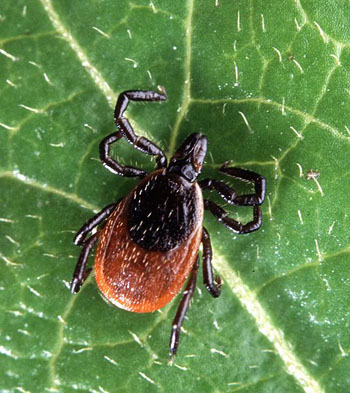Differentiating Septic Arthritis from Lyme Disease Arthritis in Children’s Knees
By LabMedica International staff writers
Posted on 24 May 2016
The two conditions often include similar symptoms and both can show elevated measurements in laboratory tests for inflammation and for white blood cell (WBC) counts – however each condition requires different immediate treatment. A new study identifies symptoms that are predictive of septic arthritis when the condition presents itself in a child’s knee – an important distinction in areas where Lyme disease is endemic.Posted on 24 May 2016
Septic arthritis is considered a medical emergency and includes the need for surgical irrigation (flushing) and drainage to prevent rapid and irreversible destruction of the cartilage surrounding the knee. Lyme disease is treated with antibiotics. In addition to knee swelling and pain, both conditions may cause a fever, swelling of other joints, irritability, and an inability to bear weight on the affected extremity.

Image: Adult deer tick Ixodes scapularis. Lyme disease is caused by Borrelia bacteria and transmitted to humans upon the bite of infected ticks of the genus Ixodes (Photo courtesy of Scott Bauer, Agricultural Research Service of United States Department of Agriculture).
Researchers at Children’s Hospital of Philadelphia (CHOP; Philadelphia, PA, USA) performed a retrospective review study of records of 189 patients under age 18 who presented with excess fluid in the knee between 2005 and 2013. Patients with either septic arthritis (positive joint-fluid culture or synovial WBC count of >60,000 WBC/mm3 with negative Lyme titer) or Lyme disease (positive Lyme immunoglobulin G on Western blot analysis) were included. Of the 189 patients: 23 had culture-positive septic arthritis; 26 had culture-negative septic arthritis; and 140 had Lyme disease.
Upon statistical analysis, 4 characteristics were identified as independent predictive factors for pediatric septic arthritis: presence of knee pain with short range of motion, C-reactive protein of >4.0 mg/liter (CRP test used to measure inflammation), patient-reported history of fever, and age younger than 2 years. The more factors that are present, the higher the risk of having septic arthritis.
“The probability of septic arthritis with any 1 factor present was 18% compared to 100% with all 4 factors present," said study author Wudbhav N. Sankar, MD, orthopaedic surgeon at CHOP, "Our study offers a useful prediction algorithm to help distinguish septic arthritis from a knee effusion caused by Lyme disease in children.”
The study, by Baldwin KD et al, was published May 4, 2016, in the Journal of Bone and Joint Surgery.
Related Links:
Children’s Hospital of Philadelphia














